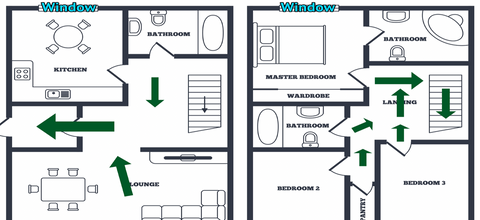Emergencies can happen anytime, anywhere. Here’s how to ensure your family is prepared with clear steps to communicate and act effectively before disaster strikes.
Creating Your Emergency Plan
One of the first steps in emergency preparedness is communication. Everyone in the family should understand their role and the overall emergency plan. Keep it simple and effective.

Check out this resource for a detailed Family Emergency Communication Plan.
Essential Steps to Prepare
-
Identify Hazards in the Home
Secure shelves, store oily rags in metal containers, and ensure cleaning supplies are out of children’s reach. Keep live electrical areas safe.
-
Acquire First-Aid and CPR Skills
It’s crucial for all family members to learn first-aid and CPR. Here’s a guide to performing CPR.
-
Secure Water Storage
Ensure you have clean, drinkable water stored. The Red Cross recommends one gallon per person per day. Check out our 5-gallon stackable water container for easy storage.
-
Build Up Food Supplies
Plan for at least two weeks of food storage per person. Include freeze-dried or dehydrated food with long shelf lives. Recommended items include rice, beans, canned vegetables, and non-perishable dairy. The American Red Cross suggests focusing on nutritional balance.
-
Gather Emergency Supplies
Consider having two emergency kits: a larger one for home and a portable version for evacuation. Essential items include first-aid kits, hand warmers, radios, and blankets. Check expiration dates regularly and use the "first-in, first-out" method.
-
Create an Evacuation Plan
Identify safe evacuation routes and destinations. Set up at least two meeting points and assign an out-of-town contact person. Make physical maps in case GPS is unavailable.
-
Organize Important Documents
Gather originals of vital documents like IDs, insurance policies, tax returns, and financial records in a waterproof container. Digital copies on a thumb drive can also be helpful.

Special Considerations
Emergency Situations in a Vehicle
Read our guide on surviving in your car for valuable tips.
Preparedness for School and Work
If you have children, check with their school on disaster procedures. At work, know the emergency plan and evacuation routes.
Practice and Revise Regularly
Review your emergency plan every six months. Test smoke detectors monthly, change batteries twice a year, and replace carbon monoxide detectors as needed. Regular practice builds confidence and helps everyone know their role.
Share Your Family's Preparedness Plan
We’d love to hear from our ReadyFamily! Share your plans and preparations to inspire others. For more resources, visit ready.gov, Red Cross, or FEMA.










